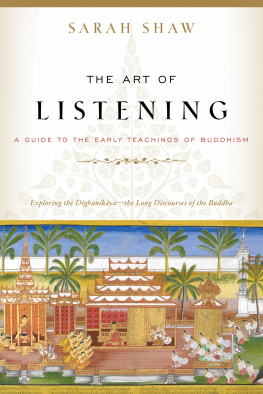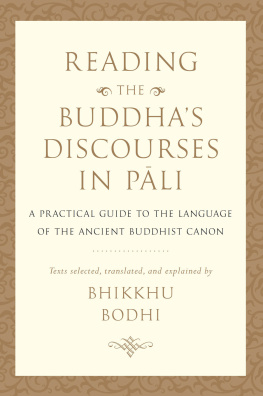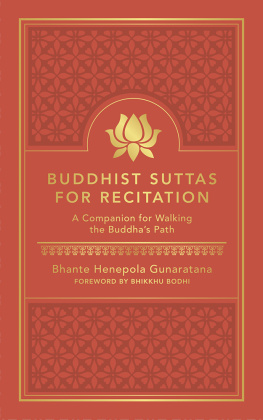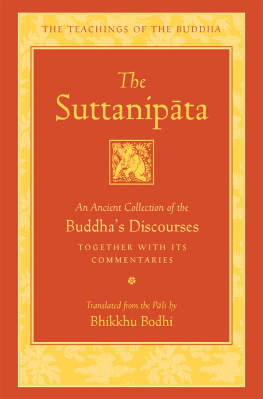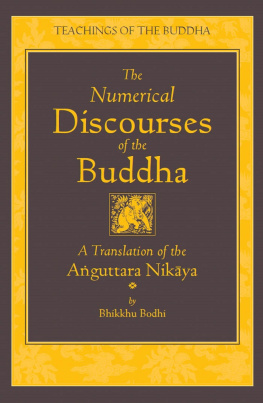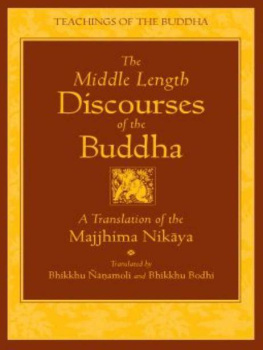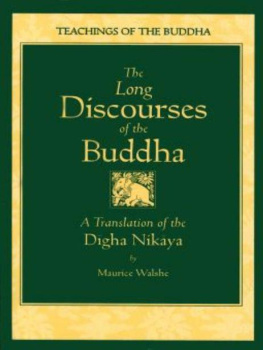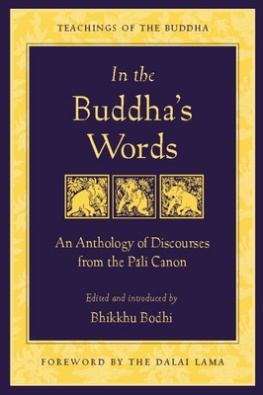Long Discourses
- Front Matter
- Discourses
Dghanikya: Long Discourses
Translated for SuttaCentral by Bhikkhu Sujato , 2018 . Dedicated to the public domain via Creative Commons Zero (CC0). You are encouraged to copy, reproduce, adapt, alter, or otherwise make use of this translation in any way you wish. Attribution is appreciated but not legally required.
The Long Discourses (Dgha Nikya, abbreviated DN) is a collection of 34 discourses in the Pali canon (Tipiaka) of the Theravda school. The word long refers to the length of the individual discourses, not the collection as a whole, which is in fact the smallest of the five Pali Nikyas. It is one of the fundamental collections of early Buddhist teachings, depicting the Buddha in a lively range of settings. Compared to other collections it contains more extended narratives in diverse literary styles. Many discourses feature interreligious dialog with brahmins and other non-Buddhists. This collection parallels the Drghgama (DA) of the Dharmaguptaka school, which is the first text in the Taish edition of the Chinese canon. Several uncollected suttas in Chinese and Sanskrit also belong to this collection. Two-thirds of a Drghgama from the Sarvstivda school has been found, but only small portions have been published.
Guide
- Dghanikya
- Slakkhandha Vagga
The Chapter Containing the Section on Ethics (Slakkhandhavagga) is a chapter of 13 discourses. Each of these contains a long passage on the Gradual Training in ethics, meditation, and wisdom. The chapter is named after the first of these sections. The two other known versions of the Drghgama (in Chinese and Sanskrit) also contain a similar chapter. Despite the monastic nature of the central teaching, most of these discourses are presented in dialog with lay people, with a strong emphasis on the relation between the Buddhas teachings and other contemporary movements.
Brahmajla Sutta
While others may praise or criticize the Buddha, they tend to focus on trivial details. The Buddha presents an analysis of 62 kinds of wrong view, seeing through which one becomes detached from meaningless speculations.
Smaaphala Sutta
The newly crowned King Ajtasattu is disturbed by the violent means by which he achieved the crown. He visits the Buddha to find peace of mind, and asks him about the benefits of spiritual practice. This is one of the greatest literary and spiritual texts of early Buddhism.
Ambaha Sutta
A young brahmin student attacks the Buddhas family, but is put in his place.
Soadaa Sutta
A reputed brahmin visits the Buddha, despite the reservations of other brahmins. They discuss the true meaning of a brahmin, and the Buddha skillfully draws him around to his own point of view.
Kadanta Sutta
A brahmin wishes to undertake a great sacrifice, and asks for the Buddhas advice. The Buddha tells a legend of the past, in which a king is persuaded to give up violent sacrifice, and instead to devote his resources to supporting the needy citizens of his realm. However, even such a beneficial and non-violent sacrifice pales in comparison to the spiritual sacrifice of giving up attachments.
Mahli Sutta
The Buddha explains to a diverse group of lay people how the results of meditation depend on the manner of development.
Jliya Sutta
This discourse is mostly quoted by the Buddha in the previous.
Mahshanda Sutta
The Buddha is challenged by a naked ascetic on the topic of spiritual austerities. He points out that it is quite possible to perform all kinds of austere practices without having any inner purity of mind.
Pohapda Sutta
The Buddha discusses with a wanderer the nature of perception and how it evolves through deeper states of meditation. None of these, however, should be identified with a self or soul.
Subha Sutta
Shortly after the Buddhas death, Venerable nanda is invited to explain the core teachings.
Kevaa Sutta
The Buddha refuses to perform miracles, explaining that this is not the right way to inspire faith. He goes on to tell the story of a monk whose misguided quest for answers led him as far as Brahm.
Lohicca Sutta
A brahmin has fallen into the idea that there is no point in trying to offer spiritual help to others. The Buddha goes to see him, and persuades him of the genuine benefits of spiritual teaching.
Tevijja Sutta
A number of brahmins are discussing the true path to Brahm. Contesting the claims to authority based on the Vedas, the Buddha insists that only personal experience can lead to the truth.
- Mah Vagga
This chapter contains a diverse range of discourses. Several focus on the events surrounding the Buddhas death, while others range into fabulous scenarios set among the gods, and still others are grounded in detailed discussions of doctrine.
Mahpadna Sutta
The Buddha teaches about the six Buddhas of the past, and tells a lengthy account of one of those, Vipass.
Mahnidna Sutta
Rejecting Venerable nandas claim to easily understand dependent origination, the Buddha presents a complex and demanding analysis, revealing hidden nuances and implications of this central teaching.
Mahparinibbna Sutta
The longest of all discourses, this extended narrative tells of the events surrounding the Buddhas death. Full of vivid and moving details, it is an ideal entry point into knowing the Buddha as a person, and understanding how the Buddhist community coped with his passing.
Mahsudassana Sutta
An elaborate story of a past life of the Buddha as a legendary king how renounced all to practice meditation.
Janavasabha Sutta
Beginning with an account of the fates of disciples who had recently passed away, the scene shifts to a discussion of Dhamma held by the gods.
Mahgovinda Sutta
A minor deity informs the Buddha of the conversations and business of the gods.
Mahsamaya Sutta
When deities from all realms gather in homage to the Buddha, he gives a series of verses describing them. These verses, which are commonly chanted in Theravadin countries, give one of the most detailed descriptions of the deities worshiped at the the time of the Buddha.
Sakkapaha Sutta
After hearing a love song from a god of music, the Buddha engages in a deep discussion with Sakka on the conditioned origin of attachment and suffering.
Mahsatipahna Sutta
The Buddha details the seventh factor of the noble eightfold path, mindfulness meditation. This discourse is essentially identical to MN 10, with the addition of an extended section on the four noble truths derived from MN 141.
Pysi Sutta
This is a long and entertaining debate between a monk and a skeptic, who went to elaborate and bizarre lengths to prove that there is no such thing as an afterlife. The discourse contains a colorful series of parables and examples.
- Pthika Vagga
Like the previous chapter, this contains a diverse range of discourses. It is named after the first discourse in the chapter. Among the discourses here are legendary accounts of the history and future of our world, which are extremely famous and influential in Buddhist circles.
Pthika Sutta
When Sunakkhatta threatens to disrobe, the Buddha is unimpressed. Rejecting showy displays of asceticism or wondrous powers, he demonstrates his pre-eminence.
Udumbarika Sutta
This discourse gives a specially good example of dialog between religions The Buddha insists that he is not interested to make anyone give up their teacher or practices, but only to help people let go of suffering.


